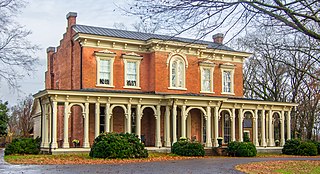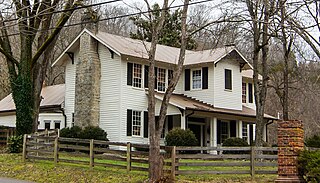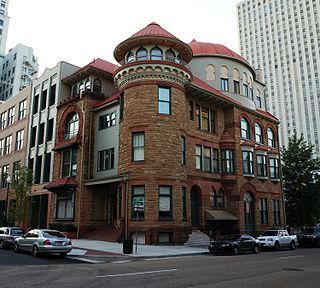
Nathan Bedford Forrest was a Confederate Army general during the American Civil War and the first Grand Wizard of the Ku Klux Klan from 1867 to 1869. Before the war, Forrest amassed substantial wealth as a cotton plantation owner, horse and cattle trader, real estate broker, and slave trader. In June 1861, he enlisted in the Confederate Army and became one of the few soldiers during the war to enlist as a private and be promoted to general without any prior military training. An expert cavalry leader, Forrest was given command of a corps and established new doctrines for mobile forces, earning the nickname "The Wizard of the Saddle". He used his cavalry troops as mounted infantry and often deployed artillery as the lead in battle, thus helping to "revolutionize cavalry tactics", although the Confederate high command is seen by some commentators to have underappreciated his talents. While scholars generally acknowledge Forrest's skills and acumen as a cavalry leader and military strategist, he is a controversial figure in U.S. history for his role in the massacre of several hundred U.S. Army soldiers at Fort Pillow, a majority of them black, coupled with his role following the war as a leader of the Klan.

Fort Pillow State Historic Park is a state park in western Tennessee that preserves the American Civil War site of the Battle of Fort Pillow. The 1,642 acre (6.6 km²) Fort Pillow, located in Lauderdale County on the Chickasaw Bluffs overlooking the Mississippi River, is rich in both historic and archaeological significance. In 1861, the Confederate army built extensive fortifications and named the site for General Gideon Johnson Pillow of Maury County. It was attacked and held by the Union Army for most of the American Civil War period except immediately after the Battle of Fort Pillow, when it was retaken by the Confederate Army. The battle ended with a massacre of African-American Union troops and their white officers attempting to surrender, by soldiers under the command of Confederate Major General Nathan Bedford Forrest.

The Sons of Confederate Veterans (SCV) is an American neo-Confederate nonprofit organization of male descendants of Confederate soldiers that commemorates these ancestors, funds and dedicates monuments to them, and promotes the pseudohistorical Lost Cause ideology and corresponding white supremacy.

The Tennessee State Capitol, located in Nashville, Tennessee, is the seat of government for the U.S. state of Tennessee. It serves as the home of both houses of the Tennessee General Assembly–the Tennessee House of Representatives and the Tennessee Senate–and also contains the governor's office. Designed by architect William Strickland (1788–1854) of Philadelphia and Nashville, it was built between 1845 and 1859 and is one of Nashville's most prominent examples of Greek Revival architecture. The building, one of 12 state capitols that does not have a dome, was added to the National Register of Historic Places in 1970 and named a National Historic Landmark in 1971. The tomb of James K. Polk, the 11th president of the United States, is on the capitol grounds.

Rhodes Memorial Hall, commonly known as Rhodes Hall, is an historic house located in Atlanta, Georgia, United States. It was built as the home of furniture magnate Amos Giles Rhodes, proprietor of Atlanta-based Rhodes Furniture. The Romanesque Revival house occupies a prominent location on Peachtree Street, the main street of Atlanta, and is listed in the National Register of Historic Places. It is open to the public and has been the home of The Georgia Trust for Historic Preservation since 1983.

OaklandsMansion is an historic house museum located in Murfreesboro, Tennessee, United States. Oaklands is on the National Register of Historic Places and is a local landmark known for its unique Italianate design.

The Rutherford County Courthouse in Murfreesboro, Tennessee, is a Classical Revival building from 1859. It was listed on the National Register of Historic Places in 1973. It is one of six remaining antebellum county courthouses in Tennessee
John Karl Kershaw was an American attorney best known for challenging the official account of the assassination of Martin Luther King, Jr. in 1968, claiming that his client James Earl Ray was an unwitting participant in a ploy devised by a mystery man named Raul to kill the civil rights leader.
Steve K. McDaniel is a former Republican Party Representative from the US state of Tennessee, having represented all of Henderson, Chester, Decatur and Perry Counties.
Triune is an unincorporated community in eastern Williamson County, Tennessee, approximately halfway between Franklin and Murfreesboro. The community is located along the Wilson Branch of the Harpeth River. The intersection of former local roads State Route 96 and the concurrency of U.S. Routes 31A and 41A is here. The community is located just north of these roads interchange with Interstate 840.

The Spencer Buford House is a property in Thompsons Station, Tennessee, United States, that was listed on the National Register of Historic Places in 1988. The main house was built about 1813. The property is also known as Roderick, in honor of the horse Roderick, a favorite horse of Confederate cavalry and irregular forces Nathan Bedford Forrest.

The Hows-Madden House is a historic mansion in Nashville, Tennessee, U.S.. It was built in 1830 for Rasa Hows, a settler and slaveholder. After he died in 1858, it was inherited by his widow and his sons, including Stephen Hows, who served under Nathan Bedford Forrest in the Confederate States Army during the American Civil War of 1861–1865. It has been listed on the National Register of Historic Places since November 23, 1984.

The Tennessee Club, also known as the Overall Goodbar Building, is a historic townhouse in Memphis, Tennessee, U.S.. Designed by architect Elah Terrell, it was built in 1888 for two doctors by the names of Overall and Peete. Colonel William F. Taylor, a veteran of the Confederate States Army who served under General Nathan Bedford Forrest during the American Civil War, also had an office in the building. By 1890, it became the home of the Tennessee Club, a social club founded in 1875. From 1907 to 1927, it was home to Overton and Overton, a real estate firm. It has been listed on the National Register of Historic Places since April 22, 1982.

The Nathan Bedford Forrest Monument is a bronze sculpture by Charles Henry Niehaus, Niehaus, one of the most preeminent sculptors in U.S. history was paid $25,000 in 1901 to create it, the equivalent of $676,000 in today’s money and all of it raised from private donations, depicts Confederate States of America Lt. General and first-era Ku Klux Klan Grand Wizard Nathan Bedford Forrest mounted atop a horse, wearing a uniform of the Confederate States Army. It was formerly installed in Forrest Park in Memphis, Tennessee. The statue was cast in Paris. Forrest and his wife are buried in front of the monument, after being moved there from Elmwood Cemetery in a ceremony on November 11, 1904. The cornerstone for the monument was laid on May 30, 1901 and the monument was dedicated on May 16, 1905. It was removed on December 20, 2017 and is currently in the possession of the Sons of Confederate Veterans. Plans are for the statue to be re-erected on the grounds of the SCV National Headquarters in Columbia, Tennessee.

The Nathan Bedford Forrest Statue was a 25 feet (7.6 m) tall statue of Confederate States of America Lt. General and first-era Ku Klux Klan Grand Wizard Nathan Bedford Forrest mounted on a horse in Nashville, Tennessee, located near Interstate 65 at 701D Hogan Road. The statue depicted Forrest shooting behind himself and was flanked by Confederate battle flags. Its abnormal facial features bore little resemblance to Forrest himself, and more resembled a screaming, deformed man.

The Nathan Bedford Forrest Bust is a bust of Confederate States of America Lt. General and first-era Ku Klux Klan Grand Wizard Nathan Bedford Forrest that was prominently displayed in the Tennessee State Capitol in Nashville. On July 23, 2021, the bust was removed, and was relocated to the Tennessee State Museum in a new exhibit that opened four days later.

The Charles Ready House, also known as The Corners, is a historic house in Readyville, Tennessee, United States. It is located in Cannon County, on the border of Rutherford County.

The Green-Evans House is a historic mansion in Lynchburg, Tennessee, U.S..

The Hugh Bright Douglas House is a historic house in Fayetteville, Tennessee. It was built in 1894 for a Confederate veteran. It is listed on the National Register of Historic Places.


















